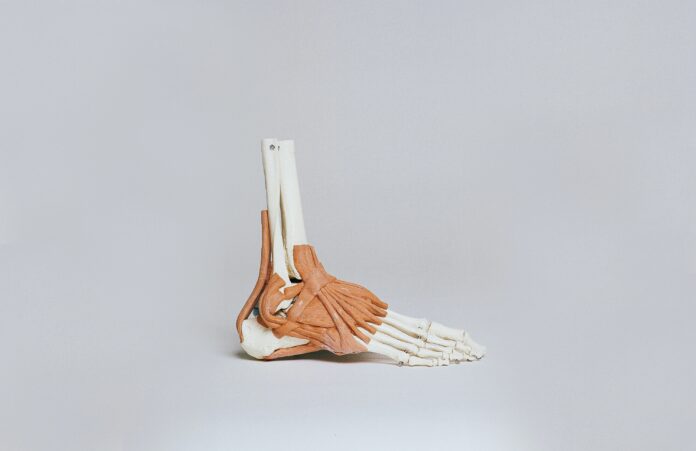Extracorporeal membrane oxygenation (ECMO) is a life-saving medical therapy used to support patients with severe respiratory and/or cardiac failure. It is an advanced form of life support that temporarily takes over the functions of the heart and lungs, allowing the patient’s body to heal and recover. ECMO involves the use of a complex system that pumps and oxygenates blood outside of the body, providing vital support to the patient’s organs. This extensive discussion will delve into the intricacies of ECMO, its principles of operation, indications, equipment used, patient management, and potential complications associated with the therapy.
ECMO, also referred to as extracorporeal life support (ECLS), is employed when conventional medical interventions are insufficient to adequately oxygenate and circulate the blood in critically ill patients. This therapy is typically considered when a patient’s heart or lung function is severely compromised, leading to inadequate oxygenation and ventilation. ECMO provides temporary mechanical support by removing deoxygenated blood from the patient, passing it through an artificial membrane oxygenator to replenish oxygen levels, and then returning the oxygenated blood to the patient’s body.
The ECMO system consists of several components that work in synergy to perform its life-sustaining functions. These components include the ECMO circuit, cannulas, a blood pump, an oxygenator, and various monitoring devices. The ECMO circuit acts as a conduit for blood flow, connecting the patient’s vasculature to the ECMO machine. Cannulas, which are flexible tubes, are inserted into large blood vessels and serve as entry and exit points for blood in the ECMO circuit. The blood pump propels blood through the circuit, while the oxygenator facilitates gas exchange by removing carbon dioxide and adding oxygen to the blood. Monitoring devices continuously assess the patient’s vital signs, blood oxygen levels, and other relevant parameters.
ECMO can be categorized into two main types: venoarterial (VA) ECMO and venovenous (VV) ECMO. Venoarterial ECMO provides both cardiac and respiratory support, as it bypasses the heart and lungs completely. In this mode, blood is drained from a large vein, typically the inferior or superior vena cava, and returned to a major artery, such as the aorta. Venoarterial ECMO is primarily employed in patients with severe cardiac failure or combined cardiac and respiratory failure. On the other hand, venovenous ECMO primarily supports the respiratory system by bypassing only the lungs. It involves draining blood from a central vein, oxygenating it in the ECMO machine, and returning it to another central vein. Venovenous ECMO is commonly used in patients with severe respiratory failure, such as acute respiratory distress syndrome (ARDS).
The decision to initiate ECMO is complex and requires careful evaluation of the patient’s condition. It involves a multidisciplinary team of healthcare professionals, including intensivists, cardiologists, cardiac surgeons, perfusionists, and ECMO specialists. Various factors are taken into consideration, such as the underlying cause of organ failure, the severity of the patient’s condition, the likelihood of recovery, and the presence of any contraindications. ECMO is typically considered as a last resort when all other available treatments have failed or when the patient’s condition is rapidly deteriorating.
Before initiating ECMO, patients must undergo a thorough assessment and preparation process. This includes obtaining informed consent, conducting diagnostic tests to evaluate organ function, securing vascular access for cannulation, and ensuring adequate anticoagulation. Anticoagulation is a critical aspect of ECMO therapy, as it prevents blood clotting within the circuit. However, achieving the optimal balance between preventing clotting and avoiding bleeding complications is challenging and requires close monitoring and adjustment of anticoagulation medications to maintain the circuit’s patency.
Once the patient is prepared for ECMO, cannulation is performed under sterile conditions. The choice of cannulation sites depends on the type of ECMO being employed. In venoarterial ECMO, cannulas are typically inserted through a median sternotomy or percutaneously in the femoral vessels. In venovenous ECMO, cannulation is commonly performed percutaneously in the femoral veins. The cannulas are carefully positioned to ensure optimal blood flow and minimize complications such as vessel injury or obstruction. Once the cannulas are in place, they are connected to the ECMO circuit, and the system is primed with a sterile solution to remove any air bubbles.
The ECMO machine is then initiated, and blood flow is gradually increased to support the patient’s cardiovascular system. The blood pump generates the necessary pressure to propel the blood through the circuit, while the oxygenator removes carbon dioxide and adds oxygen, mimicking the gas exchange that occurs in the lungs. The ECMO machine is equipped with alarms and safety features to monitor and regulate blood flow, pressure, oxygenation, and other parameters. A dedicated team of healthcare professionals closely monitors the patient’s response to ECMO, making adjustments as needed to optimize support.
While on ECMO, patients require meticulous care and management. This involves regular monitoring of vital signs, oxygen levels, and blood gases. The ECMO circuit must be continuously assessed for proper function, including monitoring the blood flow rates, ensuring adequate oxygenation, and detecting any signs of malfunction or clotting. The patient’s anticoagulation status is closely monitored, and medications such as heparin are administered to prevent clot formation. However, the risk of bleeding is carefully balanced, and the patient’s coagulation profile is regularly assessed to avoid complications.
In addition to medical management, patients on ECMO require comprehensive care to address their underlying condition and promote recovery. This includes appropriate nutrition, pain management, physiotherapy, and infection control measures. The patient’s primary medical issues, such as cardiac or respiratory failure, are also treated alongside ECMO support. The goal of ECMO is to provide a bridge to recovery or to definitive treatment, such as heart transplantation or lung transplantation.
Despite its potential benefits, ECMO is not without risks and complications. Complications can arise from vascular access, including bleeding, infection, or vessel injury. Infections are a significant concern, as patients on ECMO are at an increased risk due to the presence of foreign material (cannulas) and compromised immunity. Other complications include hemolysis (breakdown of red blood cells), clotting within the circuit, air embolism, stroke, and organ dysfunction. The management of these complications requires prompt recognition, intervention, and collaboration among the healthcare team.
The duration of ECMO support varies depending on the patient’s condition and response to therapy. Some patients may require ECMO for a few days, while others may need support for weeks or even months. Decisions regarding the duration of ECMO are made based on the patient’s clinical improvement, organ recovery, and the absence of any irreversible complications. Weaning from ECMO is a gradual process that involves reducing support while closely monitoring the patient’s response. Once the patient’s own heart and lungs regain sufficient function, the ECMO support is gradually withdrawn, and the cannulas are removed.
ECMO is a complex and highly specialized therapy used in critically ill patients with severe cardiac or respiratory failure. It provides temporary support to the heart and lungs, allowing the patient’s body to heal and recover. ECMO involves a sophisticated system of cannulas, a blood pump, and an oxygenator, working together to maintain blood circulation and oxygenation outside the body. The decision to initiate ECMO requires careful evaluation and discussion among a multidisciplinary team of healthcare professionals. The therapy itself requires meticulous patient management, including regular monitoring of vital signs, optimization of anticoagulation, and addressing complications that may arise during ECMO support.
While ECMO offers a lifeline to critically ill patients, its implementation and outcomes are highly dependent on several factors. One crucial factor is the timing of ECMO initiation. Early initiation of ECMO in appropriate patients has been associated with improved outcomes, as it allows for timely support and potential organ recovery. However, the decision to initiate ECMO must be balanced with the patient’s overall prognosis, the availability of resources, and the expertise of the healthcare team.
Another aspect that significantly influences ECMO outcomes is the experience and proficiency of the healthcare professionals managing the therapy. ECMO requires a highly skilled team, including intensivists, perfusionists, nurses, and respiratory therapists, who possess the knowledge and expertise to troubleshoot and manage potential complications. Training programs and specialized centers play a crucial role in ensuring the proficiency of healthcare providers involved in ECMO care.
Research and technological advancements continue to enhance ECMO therapy. Improvements in ECMO circuit design, oxygenators, and monitoring systems have contributed to better patient outcomes. Additionally, ongoing research aims to refine patient selection criteria, optimize anticoagulation strategies, and identify potential biomarkers for early detection of complications. Collaborative efforts and multicenter studies help accumulate valuable data and enhance the understanding of ECMO’s role in specific patient populations.
Despite its potential benefits, ECMO remains a resource-intensive and costly therapy. The equipment, expertise, and infrastructure required to implement and maintain ECMO support can present significant challenges, particularly in resource-limited settings. The cost-effectiveness of ECMO must be carefully evaluated, taking into consideration the patient’s prognosis, long-term outcomes, and the healthcare system’s capacity to sustain such specialized interventions.
In conclusion, ECMO is a highly advanced and potentially life-saving therapy for patients with severe cardiac or respiratory failure. It serves as a temporary bridge to recovery or definitive treatment in cases where conventional interventions fail. With ongoing advancements and continuous improvement in patient management, ECMO holds promise for further enhancing patient outcomes. However, careful patient selection, expert management, and ongoing research are essential to optimize the use of ECMO and ensure its availability to those who can benefit from this extraordinary medical intervention.


















